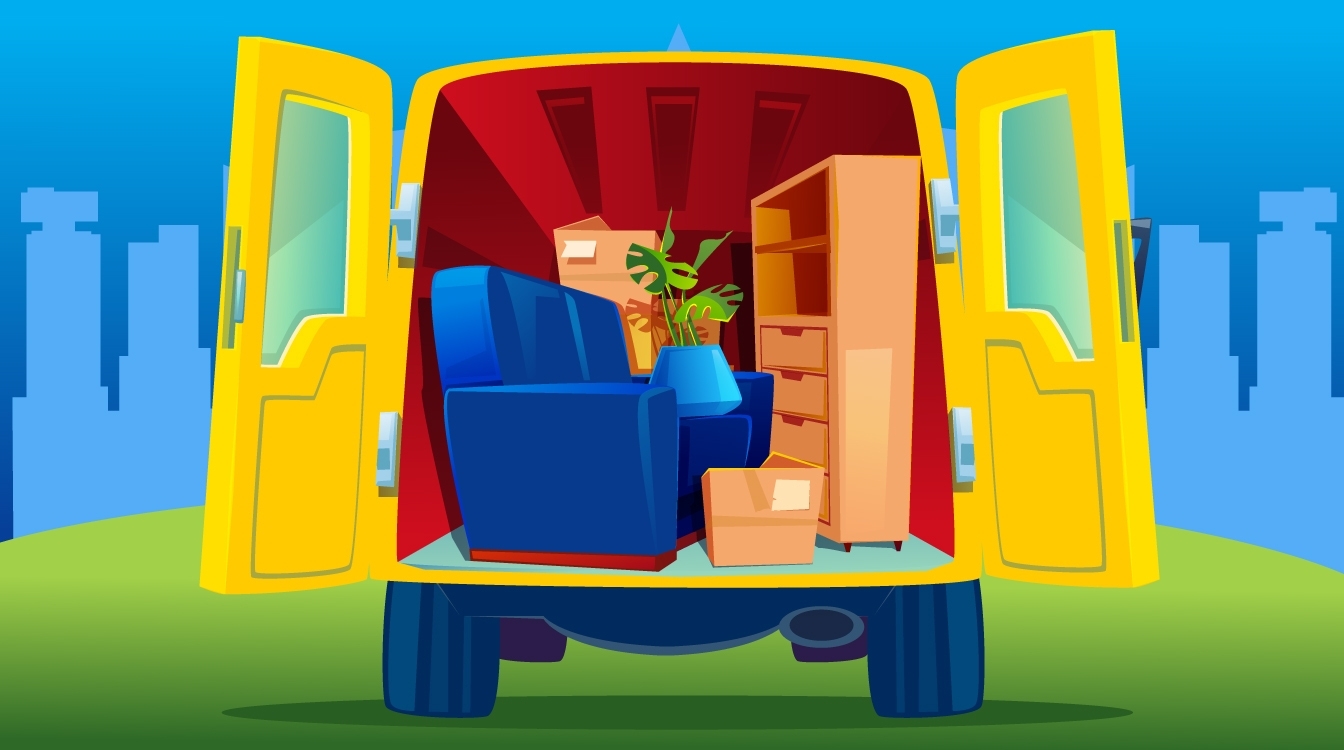11 Ways to Prepare and Pack for an Efficient Move
“Efficiency is doing better what is already being done.”
We all tend to believe that working hard is the key to success, and though that’s true to some extent, it may all be for naught if we’re not efficient too.
Especially with packing and moving, working smartly will almost always save time, money, and needless stress.
Let’s see how.
1. Discard and Donate Unused Items Long Before Move Day
Move planning and packing should begin weeks before the big day, and making a list of things you’re considering parting with is a great way to get started.
Think back to the last time you used each item and the likelihood of ever needing it again.
If it’s been awhile, chances are you don’t need it and won’t miss it.
Many charity thrift shops will gladly pick up gently used clothes, toys, and household goods, so you’ll be doing yourself a favor and contributing to a good cause as well.
How to Downsize and Declutter for A Move
How to Prepare for a Cross-Country Move
2. Pack Rarely Used Items First
Packing things that don’t get used often is a logical second step in the moving process.
Not only will you feel a sense of accomplishment early on, but you won’t disrupt your normal routine until it’s absolutely necessary.
Things worth hanging onto that get little use include:
- Photo albums
- Holiday decorations
- Old tax and business documents
- Special China reserved for special occasions
- Stamps, coin, record and figurine collections
3. Disassemble Beforehand
On DIY moves you’ll need to disassemble furniture like beds, tables, futons, and entertainment centers before moving them.
It may seem like a piece of cake, but it usually requires two people working together and often takes much longer than expected.
In short, it’s a surefire move day time killer.
Instead, consider doing the majority of your disassembly the day before.
Don’t forget to remove mirrors from dressers and pictures from the walls too.
Should You Hire Movers or DIY Move?
<d
4. Designate a Hardware Box
There’s no better way to turn a smooth move into a hassle than by misplacing hardware from the items you’ve taken apart.
Here we’re talking about nuts, bolts, screws, and those little plastic and metal tabs that hold the shelves in place on bookcases.
Whether you’re moving across the country or around the corner, designating one box for hardware is a good way to make sure it doesn’t disappear.
But don’t just throw it all together, keep the pieces for each item in their own zip-top sandwich or freezer bag, and label each with a marker.
Load the hardware box onto the truck last, or even better yet, take it in the car with you.
5. Use Colored Labels
Big colorful stickers on boxes make getting everything into the correct room on move day a snap.
They’re dirt cheap, come in lots of bright colors, and are available everywhere from Wal-Mart and Target to supermarkets and arts and crafts stores.
Instead of settling for one sticker per box, put one on each side and the top too, that way no matter how they’re stacked you’ll see the color clearly.
Put a sticker on the door jam outside each room as well so your diligent workers will know where each box goes.
It’s a good idea to label boxes with a black marker as well.
Listing the contents of each box makes it easy to find the things you need more quickly during the unpacking process, which can take days.
6. Pack “Essentials” Bags
After a long day of packing and moving, there’s nothing better than a hearty meal, a hot shower, and a clean change of clothes.
Rooting through countless boxes when you’re exhausted is frustrating, to say the least, so pack a box, backpack, or suitcase with clean clothes and toiletries for each member of the family, and set them aside so they don’t get loaded onto the truck by accident.
Don’t forget to include medications, toys for the kids, and other necessities like cell phone chargers, snacks, clean towels, sheets, and pillowcases.
7. Leave Dresser Drawers Empty (Until They’re in the Truck)
Conventional wisdom says that stuffing dresser drawers with clothes and bedding is a good way to utilize space and cut down on the number of boxes you’ll need when moving.
No argument there, but there are downsides too.
Like often needing to tilt dressers and chests of drawers while carrying them around corners and downstairs.
The added weight makes it more likely that the drawers will fall out, resulting in damaged walls, bloody fingers, and ruined furniture.
Instead, remove the drawers and carry the dresser frame into the truck or container, then replace them and pack light unbreakable items inside.
When you get to your new home, reverse the process.
8. Load Like a Pro
When loading trucks and storage containers, mixing items like furniture and boxes from different rooms is necessary to utilize space efficiently.
But as much as is possible, keeping furniture together will make getting it into each room and situated correctly much easier.
Also, don’t make the mistake of loading all your boxes first.
It may seem like a great way to get lots done quickly, but it’ll make things more difficult later when all you’ve got to work with is bulky furniture.
9. Leave the Boxes Until Last
If the weather cooperates, staging boxes on the driveway or in the garage until the furniture is inside your new home is a good way to make delivery easier and more efficient.
Navigating in a home stuffed with boxes is difficult for movers.
It’ll increase your move time, make damage more likely, and end up costing you more at the end of the day.
So if possible, furniture first, boxes second.
Where to Get Free Moving Boxes
10. Rent a Bigger Truck (or Container) Than You Need
It may sound counterintuitive, especially these days when most of us are trying to save money wherever we can.
However, upping the size of your rental truck or storage container may just keep more of those hard-earned greenbacks in your pocket.
When space is an issue, you’ll need to spend inordinate time loading each item carefully, because if you don’t everything may not fit.
But with a large truck or container, you’ll be free to load more quickly without constantly worrying about space, and will therefore get done sooner, and save money.
11. Rent Your Truck the Day Before
Imagine this.
It’s move day.
You wake early, eat breakfast, and head out to pick up your rental truck.
But you get stuck in a nasty traffic jam on the way, and when you finally do get there you’re the fifth customer in line and the inexperienced staff aren’t exactly setting any speed records.
Long story short, by the time you get home with the truck it’s nearly ten o’clock.
You’ve just wasted two solid hours of work time, which means you’ll be that much more rushed and tired at the end of the day.
Not only that but getting the truck back before closing time may not be possible, in which case they’ll charge you for another day.
By renting the truck the day before, you will pay more, but waking up and having it already parked in your driveway will mean you’ll get started bright and early and finished at a reasonable time.
Not what you were looking for?
Check out other categories that can help you find the information you need!


